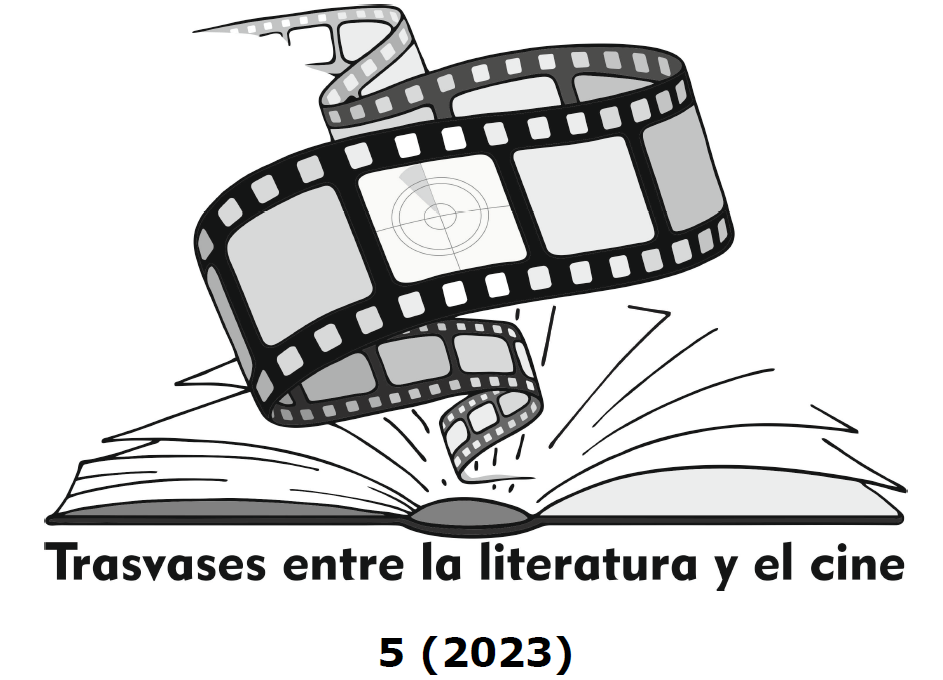The The Old Man and The Sea animated film by Alexandr Petrov
DOI:
https://doi.org/10.24310/tlc.5.2023.15525Keywords:
Alexandr Petrov, Ernest Hemingway, Genette, transtextuality, comparative analysisAbstract
In this paper we analyze the animated filmic hypertext made by Alexandr Petrov, derived from the novel by Ernest Hemingway, based on some proposals made by Gérard Genette on transtextuality, to highlight the main phenomena of transformation that are verified in the film, regarding the literary work, as well as its semantic consequences.
Among these transformations are the reduction of the literary text, but also the reorganization of certain elements, the exclusion of some sociocultural anchor points that were indicated in the written work. These phenomena have important semantic consequences and guide the interpretation of the plot in a different sense from that of the original text.
Downloads
Metrics
Publication Facts
Reviewer profiles N/A
Author statements
Indexed in
-
—
- Academic society
- N/A
- Publisher
- Universidad de Málaga
References
Academia Rusa de las Artes (2022), «Alexander Petrov/Петров, Александр Константинович», Miembros de la Academia. [En línea https://www.rah.ru/the_academy_today/the_members_of_the_ academie/member.php?ID=51731. Fecha de consulta: 12/01/2022]
Baker, Sheridan (1967), Ernest Hemingway: An Introduction and Interpretation (American Authors and Critics Series), New York, Barnes
& Noble.
Baker, Carlos (1972), Ernest Hemingway: A Life Story, Princeton (New Jersey), Princeton University Press.
Barthes, Roland (1994), El susurro del lenguaje, Barcelona, Paidós.
Bhoi, Chittaranjan (2015), «Dynamics of Style and Technique: A Reading of Hemingway’s The Old Man and the Sea», American Research Journal of English and Literature, 2, págs. 5-9.
Breit, Harvey (1952), «Talk with Ernest Hemingway», New York Times, 7 de septiembre, New York, pág. 20; y «The Old Man and The Sea», Saturday Review, 6 de septiembre, pág. 194.
Bloom, Harold (1973), La Angustia de las Influencias, Caracas, Monte Ávila Editores.
Bloom, Harold (2008), Bloom’s Modern Critical Interpretations. Ernest Hemingway’s The Old Man and the Sea, New York, Bloom’s Literary Critisim.
Brenneren, Gerry (2008), «Psychology», en Harold Bloom (ed.) Bloom’s Modern Critical Interpretations. Ernest Hemingway’s The Old Man and the Sea, New York, Bloom’s Literary Critisim, págs. 109-122.
Dällenbach, Lucien (1976), « Intertexte et autotexte », Poétique, 26, págs. 282-296.
Eco, Umberto (2003), Decir casi lo mismo. Experiencias de traducción, Barcelona, Lumen.
Elizondo, Sonny y Weinbloom, Elizabeth (2011 y 2023), «The Old Man and the Sea Gregorio Fuentes: The Inspiration for the Character of
Santiago». GradeSaver, [En línea https://www.gradesaver.com/theold-man-and-the-sea/study-guide/gregorio-fuentes-theinspiration- for-the-character-of-santiago Fecha de consulta: 13/01/2023]
Genette, Gérard. (1989), Palimpsestos. La literatura en segundo grado. Madrid, Taurus.
Genette, G. (1998), Nuevo discurso del método, Madrid, Cátedra.
Greimas, A. J. (1984), «Semiótica figurativa y semiótica plástica», en Gabriel Hernández Aguilar, Figuras y estrategias en torno a una
semiótica de lo visual, Ciudad de México, Siglo XXI, págs. 17-42.
Han, Qi (2015), «New Discussion about ‘Cannot Be Defeated’-Read the Old Man and the Sea from the Perspective of Ecocriticism», Open
Journal of Social Sciences, 3, págs. 196-199 [En línea http://www.scirp.org/journal/jss Fecha de consulta: 13/01/2023].
Hemingway, Ernst (2020), El viejo y el mar, Quito, Luna de Bolsillo.
Hemingway, Ernst (2008), The Old Man and The Sea, New York, Bloom.
Justus, James H. (2008), «The Later Fiction: Hemingway and the Aesthetics of Failure», en Harold Bloom (ed.) Bloom’s Modern Critical Interpretations. Ernest Hemingway’s The Old Man and the Sea, New York, Bloom’s Literary Critisim, págs. 53-67.
Kristeva, Julia (1967), «Bakhtine, le mot, le dialogue el le roman», Critique, 239, págs. 438-65.
Hernández Fustes, Otto et. alt. (2021), «Did Hemingway expose features of pain in the protagonist of the old man and the sea»,
International Journal of Development Research, 2, págs. 44771-44773 [En línea http://www.journalijdr.com/did-hemingway-expose-features-pain-protagonist-old-man-and-sea Fecha de consulta: 12/01/2023].
Malpartida Tirado, Rafael (2022), Una nueva mirada entre la literatura y el cine: el legado de Juan Luis Alborg, Zaragoza, Libros Pórtico.
Odessa Animation Studio (2022), «Alexander Petrov». [En línea http://animation-ua.com/en/school-animation/worldanimation/ 398-alexander-petrov Fecha de consulta: 12/01/2022].
Petrov, Alexandr (1999), «The Old Man and the Sea», Canadá Media [En línea https://www.youtube.com/watch?v=YgVFKEqM6zA&t=9s
Fecha de consulta: 28/01/2021].
Riffaterre. M. (1981), «L’intertexte inconnu», Littérature, 41, págs. 4-7. [En línea: https://www.persee.fr/doc/litt_0047-
_1981_num_41_1_1330 Fecha de consulta: 18/08/2021]
Schorer, M. (1952), «With Grace Under Pressure», The New Republic, 6 de septiembre, págs. 19-20.
Smith, Tom (2020), «A manera de comentario», en E. Hemingway, El viejo y el mar, Quito, Luna de Bolsillo, págs. 7-8.
Souza Domínguez, Belén (2013), Las influencias pictóricas en la obra de Aleksandr Petrov, Palma de Mallorca, Universitat de Les Illes Balears.
Stam, Robert y Alessandra Raengo (2005), Literature and Film: A Guide to the Theory and Practice of Film Adaptation, Oxford (Carlton), Blackwell Publishing.
Wolf, Sergio (2001), Cine/Literatura. Ritos y pasajes, Barcelona, Paidós.
Zecchi, Barbara (2014), Desenfocadas. Cineastas españolas y discursos de género, Barcelona, Icaria.
Downloads
Published
How to Cite
License
Copyright (c) 2023 Carmen Vitaliana Vidaurre Arenas

This work is licensed under a Creative Commons Attribution-NonCommercial-ShareAlike 4.0 International License.
All authors published in this journal accept the following copyright terms:
a. Authors retain their authors´ rights (copyright) and grant First Publication Rights to the journal, which whill be published under a the Creative Commons Attribution-NonCommercial-ShareAlike 4.0 International (CC BY-NC-SA 4.0) license. All about this license is available in the following link: <http://creativecommons.org/licenses/by-nc-sa/4.0>
b. Authors may separately establish additional agreements for the non-exclusive distribution of the version of the work published in the journal (e.g. including it in an institutional repository, or publishing it in a book) with an acknowledgement of its initial publication in this journal.
c. Authors are allowed and encouraged to disseminate their work electronically (e.g. in institutional repositories or on their own website) as this can lead to productive exchanges, as well as earlier and more extensive citation of published work.
The author is responsible for obtaining permission from the copyright holder when using copyrighted materials.
This electronic journal is published by University of Málaga (UmaEditorial), thus it is necessary to cite the origin of any partial or total reproduction.








22.png)










